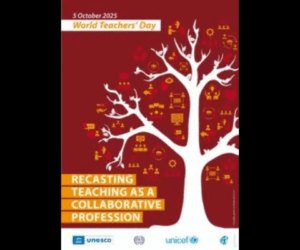We love the myth of the heroic leader: the CEO who turned around the company, the general who won the war, and the visionary who saw the future before anyone else. But the truth is less glamorous and more grounded: leaders don’t rise or fall on their brilliance alone. They rise or they collapse on the strength of their followers.
Think of Apollo 13. The world remembers the voice of Flight Director Gene Kranz declaring, “Failure is not an option.” Yet the survival of the mission hinged on the engineers, scientists, and staff who challenged assumptions, improvised solutions, and refused to retreat into silence. Leadership may have been at the microphone, but followership carried the mission home.
“For too long, followership has been cast as passive obedience, when in reality it is an active, courageous, and indispensable force. Leaders may set the vision, but it is followers who determine whether that vision soars or crashes.”
Robert Kelley’s research showed decades ago that effective followers are not “sheep” but partners who think independently and act with purpose. Ira Chaleff deepened this idea, calling for “courageous followers” who are willing not only to support leaders but also to challenge them when necessary. These thinkers argued that the health of organisations rests as much on the quality of their followership as on the talent of their leadership.
In organisations where followership is misunderstood, employees retreat into compliance, waiting for instructions and minimising their initiative. Innovation dries up. Risk increases. Leaders become isolated in echo chambers, convinced they are steering the ship when, in reality, no one is rowing. But when followership is seen as a craft, something practised with skill and courage, it transforms workplaces into collaborative ecosystems. Studies show that teams with proactive followers generate higher engagement, more resilient problem-solving, and even stronger leadership outcomes.
Followership is not about less power; it is about different power. Leaders set direction, but followers create momentum. Leaders hold authority, but followers hold accountability for execution. Together, they form a loop: one without the other collapses.
Therefore, what does courageous, engaged followership look like in practice? It is neither blind obedience nor reckless defiance. Instead, it is a disciplined balance of support and challenge.
It means voicing concerns not as complaints but as commitments to shared success. When a project plan seems unrealistic, the follower reframes resistance as responsibility: “I want this to succeed, but here’s where we might stumble. Can we adjust? ” This subtle but critical shift changes the tone from confrontation to collaboration.
It also means practising “upward accountability”, where followers take initiative rather than waiting for instruction. A courageous follower doesn’t say, “Nobody told me.” Instead, they say, “Here’s what I saw, here’s what I did, and here’s where I need clarity.” Leaders thrive when their followers step up as thinking partners rather than passive executors.
Another essential mark of strong followership is knowing when to dissent. Chaleff reminds us that the most dangerous followers are the silent ones in the face of wrongdoing. History is filled with tragic failures, not because leaders lacked vision, but because followers withheld truth. Healthy organisations thrive when followers respectfully confront leaders with uncomfortable realities. The follower who says, “I see a blind spot we need to address,” is not undermining the leader; they are protecting the mission.
Equally powerful is the concept of “peer courage”. Followers not only influence leaders; they also influence one another. A single dissenting voice can easily be silenced, but when peers echo and reinforce that voice, the culture shifts. What one person risks alone becomes a collective act of solidarity. Research from MIT confirms that “team voice”, where multiple employees reinforce constructive input, not only shields individuals from retaliation but also accelerates organisational learning. Followers, in other words, can create a chorus of candour that leaders cannot ignore.
This reframing of followership challenges us to stop seeing it as a lesser role. Too often, the very language of “leaders” and “followers” implies a hierarchy of worth, as though leadership is glamorous and followership is merely functional. Both are relational roles, interdependent and essential. Great leaders are shaped by great followers, just as great followers are shaped by great leaders.
For those in followership roles, the real challenge is not whether you have influence – you do – but how you use it. Ask yourself: Do I confuse loyalty with silence, withholding my best input to protect harmony? Do I challenge my leader constructively when I see risks, or do I retreat into whispers after the meeting? Do I model proactive responsibility, or do I wait for direction before moving? Am I a follower who fuels my leader’s growth or one who quietly watches them falter?
The truth is that every follower has a choice. You can reinforce silence, or you can spark dialogue. You can wait for direction, or you can lean in with initiative. You can play it safe on the sidelines, or you can step into the arena of shared responsibility.
Here’s your challenge: In your next team interaction, resist the hallway whisper. Instead, bring one thought into the room, not recklessly, not aggressively, but constructively. Frame it as a contribution to collective success. If a colleague voices something brave, add your weight by affirming or extending it. Safety doesn’t emerge in a single bold act; it accumulates in small, steady choices to replace silence with voice.
Leadership may shape the vision, but followership shapes reality. Organisations do not thrive on heroic leaders alone; they thrive on followers brave enough to engage, support, challenge, and co-create. Followers are not passengers. They are co-pilots. And when they embrace that power, organisations don’t just move forward; they soar.
About the author:
Dr Toye Sobande is a strategic leadership expert, executive coach, lawyer, public speaker, and award-winning author. He is the CEO of Stephens Leadership Consultancy LLC, a strategy and management consulting firm offering creative insight and solutions to businesses and leaders. Email: [email protected]









